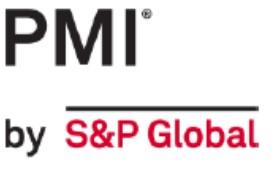The Global Purchasing Managers’ Index (PMI) for manufacturing produced by J P Morgan using the data from S&P Global was unchanged from the March and April figures of 49.6. This came as output increased for the 4th month in a row, accelerating to its fastest pace for 11 months, albeit still relatively subdued; this was balanced by new orders deteriorating and the perverse (at least until now) effect of a further shortening of suppliers’ delivery times.
The manufacturing PMI for the UK fell again to a 4-month low of 47.1 as the rate of contraction of output, new orders and employment all accelerated – the other two elements of the weighted calculation that produces the PMI (stocks of purchases and supplier delivery times) were also negative. The fall in export orders came from reduced demand from both the US and Europe as a result of rising international competition and, for the latter market, customers switching to local sources to avoid post-Brexit trade and transportation complications.
The manufacturing PMI in the Euro-zone also fell, in this case to the lowest level for 3 years at 44.8. Both output and new orders fell at the fastest pace since last November and although employment in the sector increased, this was at the slowest pace in the current 28-month period of growth. The index was also helped down by suppliers’ delivery times shortening again. Of the 8 countries included in the Euro-zone calculation, only Greece was above 50 but even they saw a lower PMI than in April; the only Euro-zone country not to see a deterioration in their manufacturing PMI was France which was marginally higher but still below 50.
Elsewhere in the EU, the PMI readings for Czechia, Poland and Sweden were all negative with trends compared to April of no change, a small increase and a substantial decline respectively. Hungary, which is often volatile, also saw a sharp reduction in the PMI but in this case it was still significantly positive.
Outside the EU, the PMI for Switzerland fell sharply to stand even further below 50 at one of the lowest PMI’s in this analysis while Turkey was unchanged at 51.5.
In Asia, both China and Japan saw an improvement in their PMI which took their readings back above the crucial 50 level, but the marginal rise in South Korea was not enough to tip them into positive territory. Taiwan had a further weakening of its PMI but India saw an increase in its already strong figure (the result for the ASEAN region is not out until Monday).
Finally, in the Americas, the trends were generally negative with the USA, Canada and Columbia all seeing their readings move into negative territory while the smaller fall in Mexico was not quite enough to tip the balance and their PMI remains above 50. The exception to the general trend in this region was Brazil which recorded an increase in the PMI, albeit only to 47.1 and still the lowest reading in the region.
Across the 27 countries/regions that we cover in this analysis, only 7 had PMI readings above 50 (10 in April, including the ASEAN area), with a handful moving in both directions across the crucial 50 level. The highest readings were in India (58.7) and Hungary (57.1), while Brazil (+2.8 points) had the largest improvement on the April figure. In the opposite direction, the weakest readings were in Austria (39.7) and Sweden (40.6) with the largest reductions being in Hungary (-4.8 points) and Sweden (-4.3 points).
The individual S&P Global PMI reports are available to download on their web-site at https://www.pmi.spglobal.com/Public/Release/PressReleases but we also have a summary charts report which is available to download below. You should note that the PMI readings for Hungary, Sweden and Switzerland are not compiled by S&P Global but can be found with an appropriate internet search (it also means that they are not part of the global PMI calculation).

